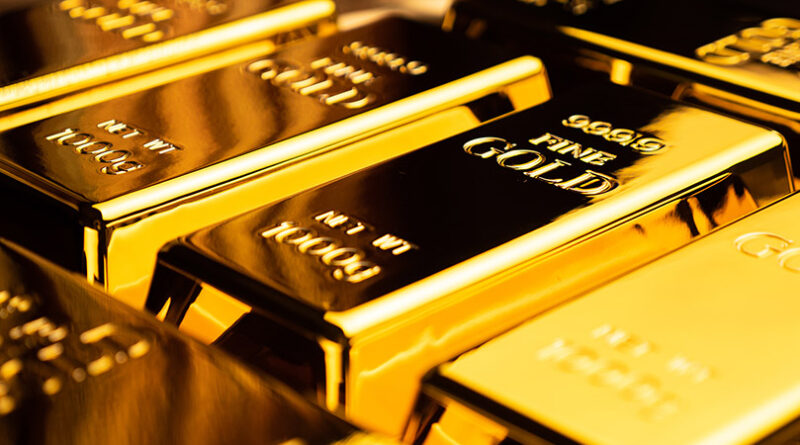BRICS: South Africa should think big and establish a gold-backed currency
South Africa joined Brazil, Russia, India, and China in the “BRICS” co-operative alliance, with more members potentially to be added this year.
In the past South Africa had a chance to play a key role in the world’s markets but some of the incumbent politicians and sectors of the population are not showing the characteristics needed to build a winning country. Whichever party or parties gain a majority in the next election, they will need to adopt policies that reflect the courage and understanding necessary gain the external and internal support that will allow the government and the population to secure peace and personal security for all. And With powerful external partners they will have greater opportunities to adopt policies that will allow South Africa, in due course, to play a leading role on the African continent. On 17 February 2009, I wrote that South Africa could lead the world out of the fiscal crisis of the time if it established a completely gold-backed rand. My proposal was not to return to the generally understood “gold standard”, which requires the central bank to demand the exchange of paper currency for gold at a fixed exchange rate. The mechanism that I proposed was for the establishment of a currency board, which would have full responsibility for managing the rand. This would mean being required to back the rand “fully” with physical gold holdings at a specified rate per rand – a rate that remained constant.
My original proposal read as follows: Currency boards prevent governments and central banks from manipulating their currencies. They function even better if they are independent, separate from central banks, and have the sole purpose of providing the country’s citizens with sound currencies. South Africa should consider establishing an independent currency board that, to back the rand, utilises gold rather than a foreign currency.
According to the 31 January 2009 statement of assets and liabilities published by the Reserve Bank, the liabilities reflected notes and coins in circulation amounting to R68.4 billion, and the assets included R37.7 billion (4,011,417 ounces) of gold holdings valued at R9,398.79 per ounce. At the same price, for the central bank to fully back the notes and coins in circulation with gold, a purchase of a further R30.7 billion of gold would have been necessary.
If an independent currency board had been established on 31 January 2009 to manage the rand, it would have taken over the Reserve Bank’s R68.4 billion liability in respect of notes and coins in circulation, its gold assets of R37.7 billion and, theoretically, forward cover provided by the Reserve Bank for another R30.7 billion of gold at R9398.79 per ounce to settle the balance of its liability to the Currency Board.
On that date one rand would have been declared to be equivalent to 1/9398.79th of an ounce of gold, fixed for all time. While the Currency Board would be compelled to maintain precisely correct gold holdings at the fixed weight of gold per rand to cover notes and coins in issue, it would not undertake to part with any of its gold in exchange for notes and coins. The reason is that the gold holdings of the Currency Board would represent a control mechanism to prevent excessive printing of money – rather than a return to gold as money, which would be something vastly different and more difficult to implement.
For all new rand notes or coins issued, other than for replacing damaged notes, the Currency Board would have to purchase gold. It would in other words have no incentive to unnecessarily increase the quantity of rands in circulation, thereby preserving the value of the rand and therefore the value of the savings of ordinary people and businesses.
Now, to bring these figures more up to date, according to the 31 March 2011 statement of assets and liabilities published by the Reserve Bank, we find that the liabilities reflected notes and coins in circulation amounting to R78.3 billion, and the assets included R39.1 billion (4,017,530 ounces) of gold holdings valued at R9731.88 per ounce. At the same price, to fully back the notes and coins in circulation with gold, a purchase of a further R39.2 billion of gold would have been necessary.
If an independent currency board had been established on 31 March 2011 to manage the rand, it would have taken over the Reserve Bank’s R78.3 billion liability in respect of notes and coins in circulation, its gold assets of R39.1 billion and, theoretically, forward cover provided by the Reserve Bank for another R39.2 billion of gold to settle the balance of its liability to the Currency Board.
An announcement is expected from some of the BRICS countries that they intend to create gold-backed currencies, mainly for utilisation in international trade but also to stabilise their monetary systems
There are many economists who are sceptical about the role that gold can play in the financial world. According to other economists, gold has played an important role in providing a sound base for reliable monetary systems, and still does so.
Economies that have gained substantially from establishing currency boards and adopting economic freedom policies are (1) Hong Kong (12) Lithuania (23) Bulgaria (listed according to their freedom rankings as measured by the 2022 Economic Freedom of the World annual report).




